At my trip
Places in Bahrain
Many beautiful places to visit and interesting thing to do. At my trip is a competitive inbound division of at my trip providing land arrangements and ground handling services for travellers from various countries. At my trip is leading DMC in the country offering products ranging from 3* to 5* hotel accomodation, furnished and serviced apartments, self & Chauffer driven car rentals, airport transfers, sightseeing tours, short excursions, desert camping, weekend breaks, yatch cruise and tourist visa assistance etc.
Places to visit in Kingdom of Bahrain – The Island of Pearls
- Bahrain National Museum
- Qalat Al Bahrain Site and Museum
- Boats Trips to Bu Maher Fort
- Dar Island
- Bab al Bahrain
- Block 338
- Aali Burial Mounds and Pottery Workshops
- Old Houses of Muharraq
- Formula One : Bahrain International Circuit
- Bait al Quran
- Al Jasra Handicrafts Centre
- Lost Paradise of Dilmun Water Park
- Ain Umm Al Sujur Archaeological Site
- Al Khamis Mosque & Visitor Centre
- Arad Fort
- Sheikh Salman Bin Ahmed Al Fateh Fort
- Barbar Temples
- Siyadi House
- The Diraz Temple
- Al Areen Wildlife Reserve
- Sheikh Salman Bin Ahmed Al Fateh Museum
- Al Fateh Mosque
- Bahrain National Theatre
- Al Jasra House
- Sheikh Ebrahim bin Mohammed Al Khalifa Centre for Culture and Research
- Sheikh Isa Bin Ali House
- Al Bareh Gallery
- Tree of Life Visitors Centre
- Hawar Islands
- Al Qaisariya Souq
- Ibrahim Al Arrayed House of Poetry
- Memory of Manama - Khalaf House
- Mohammed bin Fares Hall
- Post Office
- Al- Khalefeyah Library
- Al Khamis Visitor ’s Centre
- Bani Jamra Weaving Textiles Factory
- Al Hedaya Al Khalifia School
- Dar Al Muharraq
- Archaeologies of Green Pavilion
- Pearling Path Visitors Centre
- A´ali East Burial Mound Field
- Madinat Hamad 1 Burial Mounds Field - Buri
- A´Ali West Burial Mounds Field
- Madinat Hamad 2 Burial Mounds Field - Karzakkan
- Al-Hajar Dilmun and Tylos Cemeteries
- Madinat Hamad 3 Burial Mounds Field - Dar Kulayb
- JannusanTylos Necropolis
- A´Ali Early Islamic Settlement
- Shakhura Tylos Necropolis
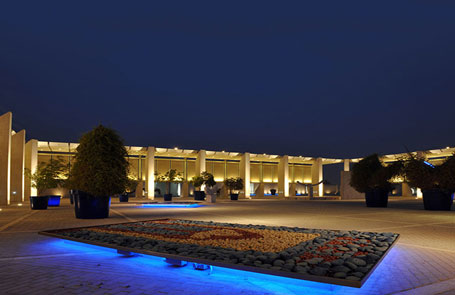
Bahrain National Museum
One of the first museums in the Gulf, the Bahrain National Museum opened in 1988. The site itself, on the edge of the sea, is a tremendous attraction, adding to its contemporary ambience which is influenced by the white travertine façade and dramatic courtyard decorated with contemporary sculptures. The exhibition halls showcase artefacts uncovered in the numerous archaeological sites in Bahrain and underpinning the longstanding history of the island. The rich collection covers 6000 years of Bahrain’s history. In addition to the archaeological exhibits, two halls are dedicated to local customs and traditions, featuring clothing, housing, rituals and traditional crafts. Moreover, the art hall features a permanent collection of works by some of Bahrain’s leading artists as well as regularly hosting temporary exhibitions.
Adjacent to the National Museum can be seen the Art Centre and Cultural Hall, both of which host temporary exhibitions and concerts throughout the year. A new addition to this cultural compound is the recently inaugurated Arab Regional Centre for World Heritage.
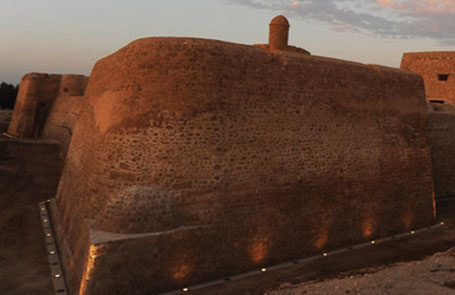
Qalat Al Bahrain Site and Museum
Known as Dilmun in ancient times, Bahrain’s rich trading history is reflected in numerous archaeological digs around the island. Qalat al-Bahrain site (Bahrain Fort site) is among the most exciting of them and is registered as a UNESCO World Heritage Site.
The fort is located atop a 17.5 hectare artificial hill that has been built while enduring over 4,000 years of continuous occupation. It is also the site of the former capital of Dilmun and is one of the most prolific archaeological digs in the Arabian Gulf. Excavations over the past 50 years have revealed residential, public, commercial, and military structures that testify to the importance of that location over the centuries.
Open to the public since 2008, the site museum display area consists of 5 exhibition halls organized around the massive Tell Wall with over 500 artifacts showcased and many interesting layers of its historical legacy have been revealed which is further highlighted with the use of an audio guide available to visitors. Additionally, a seaside café offers a stunning view of the fort and the surrounding palm groves.
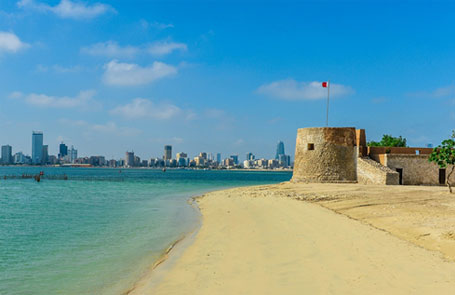
Boats Trips to Bu Maher Fort
The Bu Maher Fort Visitor’s Center is the starting point to discovering more about the Pearling Path that has been designated a UNESCO World Heritage Site. The center contains a three-dimensional display that guides the viewer though the history of the path and the houses which formed it from the early beginnings to the main pearling traders.
Bu Maher Fort, which was built in 1840, is steeped in seafaring and pearling history and forms the first stop in the historical pearling path having once served as the main fishing harbor and gateway to and from the sea.
The visitor’s center can be accessed via the sea by boats that depart from Bahrain’s National Museum harbor and soon a pedestrian bridge will allow access as well.
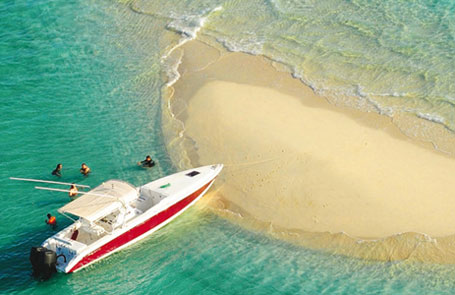
Aldar Island
Al Dar Island is the nearest island getaway to Bahrain. It offers beautiful beaches and a variety of facilities, such as palm leaf huts, tents, or chalets, and a restaurant offering delicious dishes and refreshing drinks.
Visitors to the island can also enjoy pearl dives and cruises to the stunning Jarada Island which affords one the opportunity to see up to 30 different types of coral, more than 200 species of fish, and the chance to watch the always delightful.
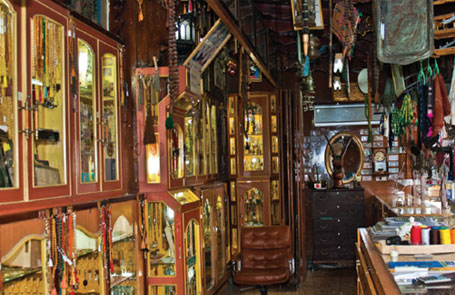
Bab Al Bahrain
Bab Al Bahrain is located at the entrance to the Manama Souq in Bahrain’s capital city Manama. Built in 1949, it once housed the government’s administrative offices and overlooked the sea. Bab Al Bahrain has undergone many big changes over the years, but the Ministry of Culture undertook a project to preserve it as a cultural landmark and thus restored it to its former glory and eventually moved its tourism sector offices and visitor’s center into the building.
Behind Bab Al Bahrain is the old Manama Souq. The souq is a vibrant collection of shops offering a wide range of goods from textiles, spices, incense, perfumes, handicrafts and souvenirs, as well as more modern products from all over the world. There are also a few traditional coffee shops.The Souq offers a unique shopping experience that brings to mind the style of commerce from days long past. The Manama Souq is a must visit while in Bahrain that visitors will be sure to enjoy.
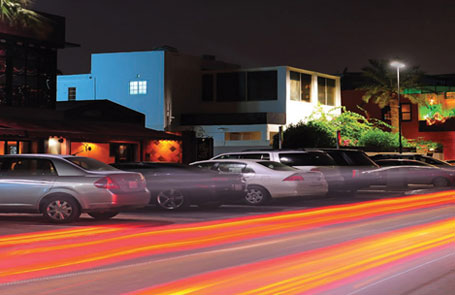
Block 338
Located in the heart of Adliya, Block 338 is a charming pedestrian quarter crammed with international restaurants, art galleries, and small boutiques. As Bahrain’s hot dining district, Block 338 offers a wide range of cuisine that is sure to appeal to all tastes. Whether you are in the mood for a fancy feast, a more traditional Bahraini dish, or just a soothing drink and a chat, there is something for everyone.
In addition to the culinary delights, Block 338 boasts several interesting retail opportunities tucked away in the side streets that encourages a stroll around as an opportunity for discovery and has also grown over the years as a vibrant center for emerging artists. It is here that Al Riwaq Gallery exhibits works originating from up and coming artists in Bahrain, the Gulf, and internationally. Al Riwaq also has a very popular café in which patrons can enjoy a drink while discussing the latest in the art world.
Al Bareh Gallery can be found in the opposite corner of Adliya and is a notable private arts center that hosts exhibitions by leading regional artists. A diverse program of exhibitions runs throughout the year in the gallery while an adjoining space is devoted to a non-profit initiative, ABCAD (Al Bareh Center for Art, Design, and Visual Culture). Devoted to artistic experimentation, ABCAD breaks art out of its human confines through work-shops, design focused film nights, and an outdoor graffiti wall. There is also a café with outdoor and indoor seating.
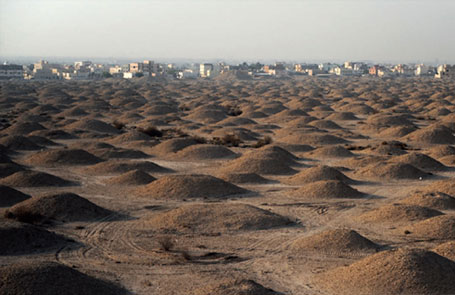
Aali Burial Mounds and Pottery Workshops
Amongst Bahrain’s mysterious ancient remains are the thousands of burial mounds that dominate the landscape north of the Island. Spanning the Dilmun era (3rd to 1st millennium BC) to the Tylos era (200 BC to 300 AD) the burial mounds are unique in terms of sheer number and concentration. The best preserved and most impressive mounds are the royal burial mounds in the village of A’ali.
Pottery workshops in the vicinity of the mounds have developed organically over the years allowing the artisans to incorporate their installations around the tombs and even using burial chambers as kilns.
The potters fire their pieces using traditional methods that have been handed down generation after generation.
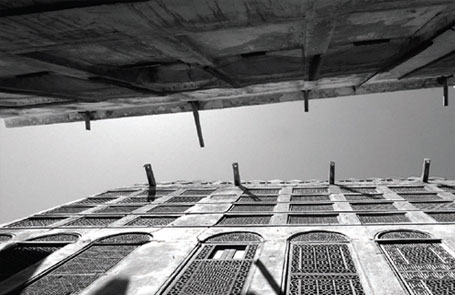
Old Houses of Muharraq
Shaikh Ebrahim Centre: Sat -Thur, 9:00am - 1:00pm, 4:00pm- 7:00pm
Muharraq, the former capital of Bahrain, is known for its cultural contributions through the many restored traditional Bahraini houses that can be found amidst the narrow lanes and byways. The Sheikh Isa bin Ali House is Bahrain’s most impressive example of Gulf Islamic architecture featuring four courtyards, beautifully carved wooden doors, and perforated gypsum panels.
The Sheikh Ebrahim Bin Mohamed Al Khalifa Center for Culture and Research provides an important insight into several particularly interesting aspects of Bahrain’s heritage. From embroidery at Kurar House to a splendid showcase of Bahrain’s pearling history at the Bin Matar House, the former home of a renowned pearl merchant, the various houses reflect Sheikh Ebrahim Center’s commitment towards preservation of both traditional architect and history.
The collection of houses include the Sheikh Ebrahim Lecture Hall, Iqra Children’s Library, Heraf al Diyar, Nukhida House (the first house to be restored along the Pearling Path), Kurar House, Abdullah al Zayed House, Bin Matar House, Bu Zaboon House, Mohammed bin Faris House that all showcase different aspects of Bahrain’s rich heritage. Maison Jamsheer, another example of the traditional courtyard houses, which is situated a stone’s throw away from Sheikh Ebrahim Center.
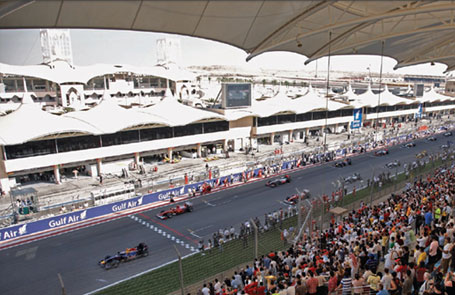
Formula One: Bahrain International Circuit
Even if you are not a motor racing fan you will be caught up in the thrill and excitement of the planet’s biggest racing event, Formula One, that has been an annual part of Bahrain’s sporting scene since April 2004. Bahrain’s Grand Prix made history as the first Formula One Grand Prix to be held in the Middle East and was awarded the “Best Organized Grand Prix” by FIA.
Even when Formula One is not taking center stage at the Bahrain International Circuit, visitors can take the wheel themselves on its state-of-the-art karting track or enjoy a thrilling ride in the passenger seat of a Hummer on its Extreme 4x4 course.
Of course, a visit to the circuit is a must so as not to miss the opportunity to test drive a race car on the F-1 track itself.
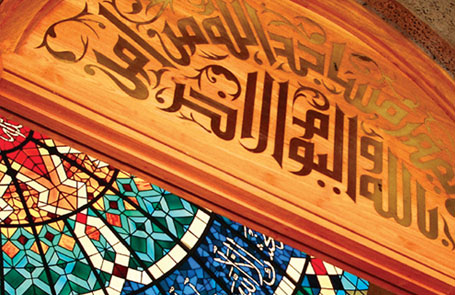
Bait al Quran
Housed in a building spectacularly engraved with Arabic script, Beit al Quran (House of Quran) showcases a fascinating collection of Quranic manuscripts as well as a library of over 50,000 books written in Arabic, English, and French that center mostly on Islam.
Manuscripts dating back to the 7th century as well as Qurans written on parchment, rice, peas, and grains are among the impressive collection. It is claimed to be the only institute in the world devoted to the Quran.
The building also houses a mosque, an auditorium, a madrasa (religious school), a museum, and hosts a variety of art exhibitions.
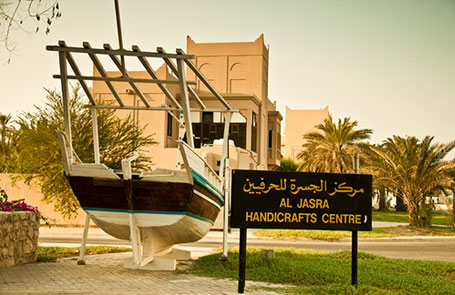
Al Jasra Handicrafts Centre
The village of Al Jasra offers a look into the traditional arts and crafts that many of the villages in Bahrain have historically produced. Al Jasra Handicrafts Center showcases pottery making, cloth weaving, wood working, basket weaving, and sadow making that are created using the traditional methods.
Located in the village of Al Jasra, Beit Al Jasra (Jasra House) is a traditional style house built in 1907. It was restored in 1986 using original building materials such as coral stones and palm leaf trunks.
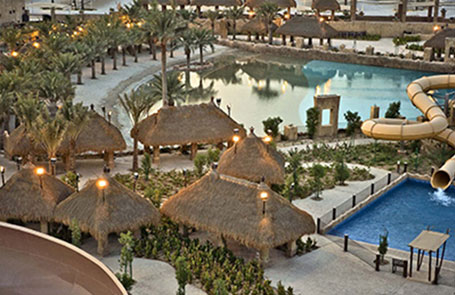
Lost Paradise of Dilmun Water Park
A sprawling water park featuring vertiginous slides and other thrilling rides in addition to a large wave pool and lazy river. There is also a sandy beach.
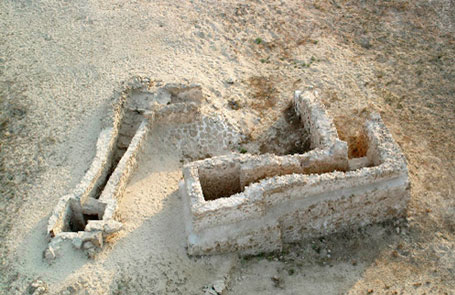
Ain Umm Al Sujur Archaeological Site
Ain Umm al-Sujur is located on the northeastern side of Diraz village and is famous for having Bahrain's most productive artesian water spring in the past. Its name means "The springs of overflowing waters".
The spring site, today dry, consists of a c. 70 x 40 m oval depression surrounded by sand. A significant number of well-carved rock ashlars are scattered around it. The bottom is occupied by two L-shaped underground wells (Wells 1 and 2), made of two distinct portions: an L-shaped access staircase, and an adjoining well-chamber, where carefully carved stone blocks reinforce the spring heads. The first structure was discovered by a Danish expedition in 1954, and the second by a Japanese one in 1994. Both wells date back to the Early Dilmun period, c. 2000-1900 BCE. These two constructions most probably pertained to an ancient Dilmun temple or shrine, as was the case for the Barbar Temple. They were protected by their underground position and escaped the destruction of the Dilmun building that once contained them.
These wells yielded remarkable Early Dilmun artefacts, presently kept at the Bahrain National Museum, which confirm religious practices at the site about three thousand years ago. Two animal statues featuring rams were found at the bottom of the staircase of Well 1, now missing their heads. Their original position was likely at the top of the stairway, where pedestals are still preserved on either side. In Well 2, a large curved block of limestone has been identified as an altar or an offering table. It was found lying upside down on the uppermost step, as though it was violently thrown into the staircase, similarly to the previous animal statues. These actions could be connected with the historical tradition of the destruction and backfilling of Ain Umm es-Sujur by the Umayyad caliph Abd al-Malik ibn Marwan (685-705 CE).
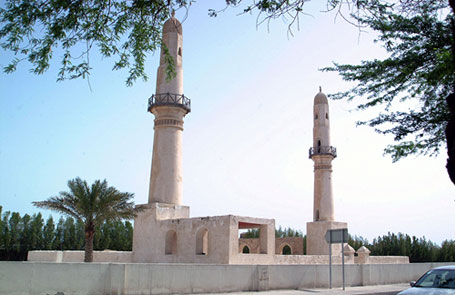
Al Khamis Mosque & Visitor Centre
Built around 692 AD, Al Khamis Mosque is one of the oldest mosques in the Arab world. The identical twin minarets on this ancient Islamic monument make it easily recognizable.
The foundation dates back to the 11th century and has been rebuilt in the 14th and 15th centuries.
During this reconstruction the twin minarets were added.
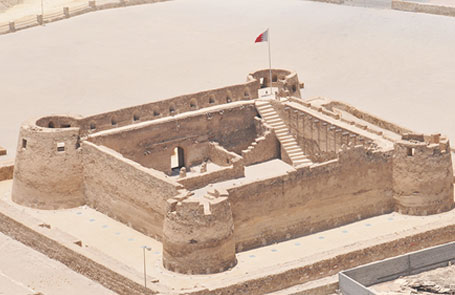
Arad Fort
Strategically located as a sea passage, Arad fort is a typical example of Omani military architecture at the end of the 15th and early 16th centuries. This fort was once the site of fierce battles and underwent different construction phases.
All though it is not clear when it was constructed it has played a major role in the defense of Bahrain against marauders through the centuries. It was restored in the 1980s using only authentic material. It is nicely illuminated at night and hosts seasonal festivals throughout the year.
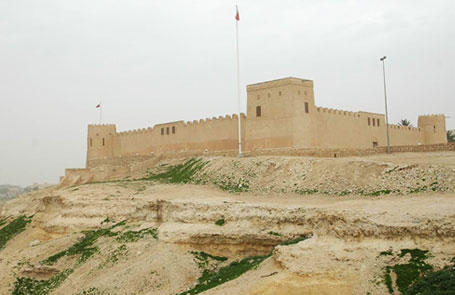
Sheikh Salman Bin Ahmed Al Fateh Fort
Sheikh Salman bin Ahmed Al-Fateh Fort, commonly known as Riffa Fort due to its location in Riffa, is an historic landmark and stands witness to one of the most important junctures in Bahrain’s history. Within its beautiful architecture lives the memory of the ruling family of Bahrain, the Al Khalifas.
A series of programs organized by the Ministry of Culture have brought life back to the fort and not only present a chronological history of the Al Khalifa family but showcase the interior space designed by the French firm, La Meduse and the local engineering firm, PAD, which took its inspiration from the fort’s history and people.
The fort also houses the Saffron Café, which overlooks the picturesque Al-Haniniya Valley, offering visitors the perfect ambience created by the site’s history and environment.
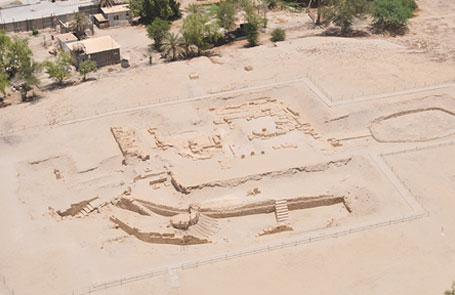
Barbar Temples
The Barbar complex consists of three successive temples built over 5 stages and dating back to the 2nd and 3rd millennium BC. They were built on platforms and organized around a courtyard.
A sunken chamber enclosing a fresh water spring constitutes the focus of a cult believed to be associated with the Mesopotamia God of wisdom and sweet water Enki.
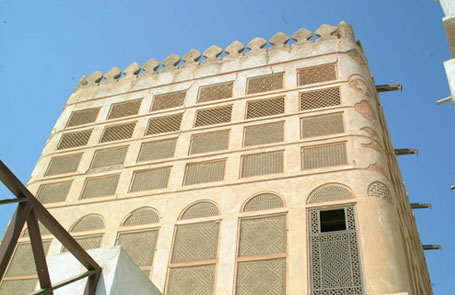
Siyadi House
The house of Ahmed bin Jasim Siyadi, a former well-known pearl merchant in the 19th century, is a beautiful example of a historic style building that Muharraq is known for. Its three story façade features uniquely curved corners and beautiful stucco work.
The house is part of a larger complex of buildings that contain a mosque and majlis.
The house is included in the “Pearling: Testimony of an Island Economy” project and was designated a UNESCO World Heritage Site in 2012.
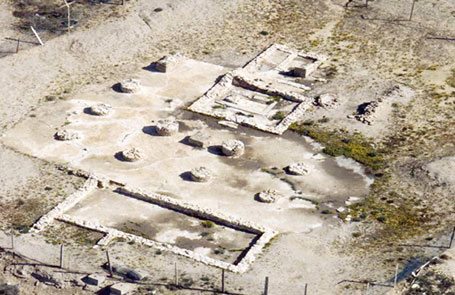
The Diraz Temple
The important site of Diraz was an extensive Dilmun settlement before the rapid urbanisation in Bahrain since the 1980s. This archaeological site is today only preserved in its southwestern corner, and reduced to a remnant of about 700 sq. meters. It is located just to the north of Budaiya Highway. It was partly explored by a British Expedition in 1973-75, in cooperation with the Direction of Archaeology of Bahrain. This area has revealed a temple from the Dilmun period, probably built in the early 2nd millennium BCE. Its architectural elements differ not only from the temples of Mesopotamia but also from the nearby temple of Barbar.
The Diraz temple is not preserved in totality and it is almost impossible to define its original shape. A central part stood on cylindrical columns with a diameter of 120 cm, arranged in two rows. Nine of them still exist, preserved to a height of 60 cm. A square base is visible in the middle of the second row and could have been a statue base. At the East of this columned hall, a small quadrangular room was likely the worship room (cella) of the temple, equipped with a possible altar. A large rectangular room, which opened at the west of the columned hall, may also have been included in the temple building.
Fragmentary clay vessels and two stamp seals in the classical Dilmun style were found at the Diraz site. Just to the east of the temple a later subterranean tomb was found, dated to the Kassite period with ongoing use in the Iron Age.
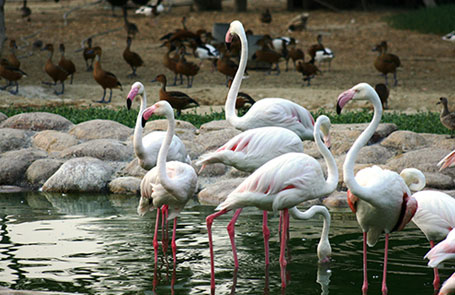
Al Areen Wildlife Reserve
Al Areen Wildlife Reserve houses rare and endangered species in a 16 sq. km area.
Persian gazelle, Impala and Arabian Oryx (nearly extinct in the wild) are among the featured enclosures in this small wildlife reserve that cares for over 500 different species.
For agricultural lovers the park offers over a 100,00 different species of plants and trees to enjoy.
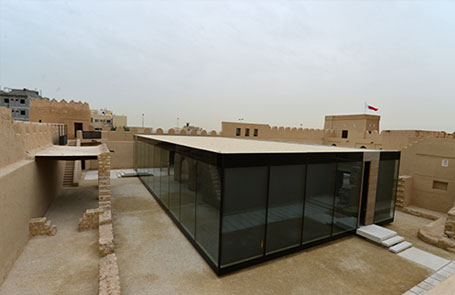
Sheikh Salman Bin Ahmed Al Fateh Museum
The Museum at the Sheikh Salman Bin Ahmed Al Fateh Fort documents the history and traditions of the ruling Al Khalifa family.
The interactive permanent exhibition is installed in a free standing pavilion built within the larger courtyard of the Fort and designed to highlight the historical architectural features of the Fort.
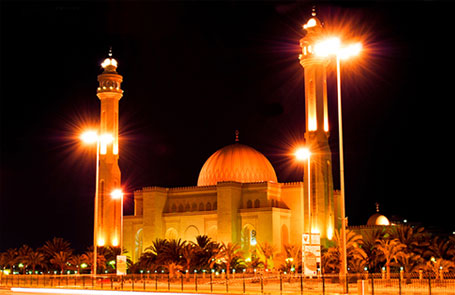
Al Fateh Mosque
The grand Al Fateh Mosque is both Bahrain’s largest place of worship and among one of the largest mosques in the world. It was built under the patronage of the late Sheikh Isa bin Salman Al Khalifa in 1987 and was named after Ahmed Al Fateh.
The mosque accommodates up to 7000 worshippers and is crowned with the largest fiberglass dome in the world. The walls of the mosque are beautifully ornamented with Kufic calligraphy.
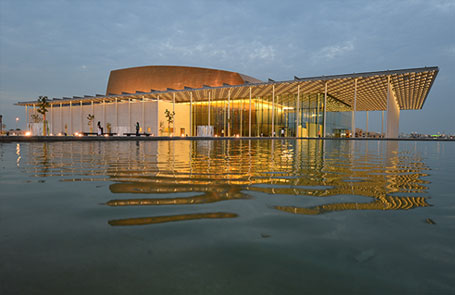
Bahrain National Theatre
Opened in 2012,the exquisitely designed Bahrain National Theater is the first national theater in the Kingdom and one its cultural icons. Located between the sea and the Bahrain National Theater lake, the shimmering edifice symbolizes the link between land and sea. It’s intricately woven ceiling is inspired by the ceilings of traditional Bahraini homes, with crisscrossing aluminum strips that allow light and air through.
Inside, the auditorium’s modern and delicate curves contrast with its elm-covered walls to resemble pearling dhows.In fact, its entire design draws heavily from the country’s sailing traditions, with a surrounding courtyard that stretches to sea’s edge, making the entire building look as if it is floating on water.
Rising from the top of the building is a golden architectural element that illuminates the center of the glass façade.The Bahrain National Theater, the third largest theater in the Arab world, can accommodate 1,001 people; an homage to the tales of 1,001 Arabian Nights.
Sprawled over 11,869m2, the theater, in addition to the main auditorium and two balconies, also houses a smaller auditorium that can seat 100 people, as well as a café in front of the sea. The theater is the place to go to watch top global musical and theatrical shows, or just to admire its amazing architectural design
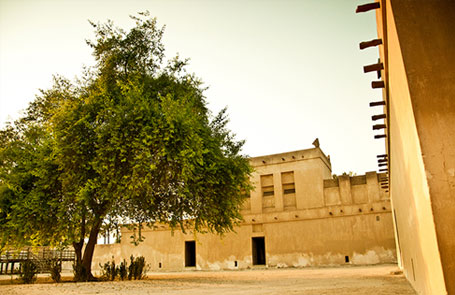
Al Jasra House
The village of Al Jasra offers a look into the traditional arts and crafts that many of the villages in Bahrain have historically produced.
Al Jasra Handicrafts Center showcases pottery making, cloth weaving, wood working, basket weaving, and sadow making that are created using the traditional methods.
Located in the village of Al Jasra, Beit Al Jasra (Jasra House) is a traditional style house built in 1907. It was restored in 1986 using traditional building materials such as coral stones and palm leaf trunks.
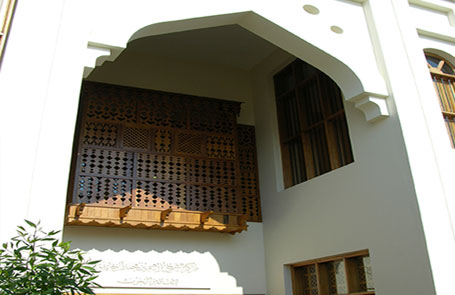
Sheikh Ebrahim bin Mohammed Al Khalifa Centre for Culture and Research
Built on the site of the Majlis of Sheikh Ebrahim bin Mohammed Al Khalifa, the center functions as a forum for dialogue between people in philosophy, literature, poetry, culture and the arts.
It consists of several houses spread around Muharraq and one in Manama, all showcasing different aspects of Bahrain's rich heritage.

Sheikh Isa Bin Ali House
The House of Sheikh Isa bin Ali Al Khalifa was his residence and the seat of his government. This beautiful house offers insight into the royal life in the 19th century.
It consists of several rooms arranged around four courtyards and characterized by its wind towers.
It is considered one of the most impressive example of Gulf Islamic architecture on the island.

Al Bareh Gallery
Al Bareh Gallery hosts exhibitions by leading regional artists.
A diverse program of exhibitions runs throughout the year in the airy art gallery while an adjoining space is devoted to a not-for-profit initiative, ABCAD, devoted to art experimentation.

Tree of Life Visitors Centre
A marvel in the desert, the Tree of Life is famous for surviving for over 100 years despite its existence with no source of water.
Visitors can observe this natural beauty from inside the visitors’ Centre, which includes information about the artefacts discovered at the site in addition to a small amphitheater to host outdoor events.

Hawar Islands
Located 20kms south of Bahrain, the Hawar Islands are a renowned wildlife reserve of international significance.
The islands are home to pristine beaches, indigenous fauna and flora, and migratory birds.
A trip to Bahrain would not be complete without a visit to Hawar.

Al Qaisariya Souq
Thurs & Sat 9:00am - 6:00pm
Fri 3:00pm - 6:00pm
One of the oldest parts of Muharraq market, Al Qaisariya Souq features a range of shops that sell a variety of products and trade goods ranging from pearls to spices and teas.
Al Qaisariya Souq is part of the Pearl path “Pearling, Testimony to an Island Economy” - UNESCO World Heritage Site.

Ibrahim Al Arrayed House of Poetry
A gathering place for poetry and poets, the Poetry House was the residence of Ibrahim Al Arrayed, Bahrain’s foremost figure in poetry and literature for over half a century.
Guests can explore his private office and peruse the volumes of poetry collections housed within its library.
The house is part of the Shaikh Ebrahim Centre for Culture and Research.

Memory of Manama - Khalaf House
One of Manama’s most unique houses, Khalaf House exemplifies the city’s strong ties to the history of pearls and trade.
The building was donated by the Khalaf family to be a cultural landmark, honoring the significant role of pearling merchants in the history of Bahrain, and is now affiliated with the Shaikh Ebrahim Centre for Culture and Research.

Mohammed bin Fares Hall
The Mohammed bin Fares Hall is located near the Mohammed bin Faris House for Fan al Sawt (The Art of Voice), and is part of the Shaikh Ebrahim bin Mohammed Al Khalifa Centre.
The building regularly hosts free musical concerts every Thursday evening featuring the popular bands that keep the traditions of the GCC region alive.

Post Office
(Closed on Fridays)
The original post office of Manama, situated directly behind Bab Al Bahrain, is now the location of a newly renovated museum that documents the history of postal services of Bahrain in all its eras.
The museum is home to an archive of photographs from the postal service since its inception, a complete catalogue of Bahraini stamps as well as stamps from all over the world.

Al- Khalefeyah Library
(Closed on Fridays)
Al- Khalefeyah Library is situated in the old city center Of Muharraq and it is reconstructed on the original Khalefeyah Library, which was one of the first public libraries to be built in Bahrain.
The building accommodates a reading area, a research center, an internet lab as well as offices.
It also provides cultural programs and activities for the public.

Al Khamis Visitor ’s Centre
Al Khamis visitor’s center provides a permanent exhibition at the site of the oldest Islamic archaeological site and mosque in Bahrain.
The visitor’s center displays all the archeological artifacts that have been discovered on this sit.
The project also includes a public pathway that surrounds the site allowing visitors to appreciate it from a distance while protecting the archaeological features of the place.

Bani Jamra Weaving Textiles Factory
(Closed on Fridays)
Architecturally, this factory is influenced by its location as Leopard Banchini drew inspiration from the memory of the palm tree materials (Barasti) once used for construction.
It provides a shaded space within to incubate weaving and spinning works, and the factory includes units for weaving using authentic traditional methods, as well as workshops teaching this craft and a shop for products.

Al Hedaya Al Khalifia School
Founded in 1919 in the northern part of the city of Muharraq, Al Hedaya Al Khalifia is the first modern school in Bahrain, and is considered a significant milestone of modern education in the Kingdom.
The building was restored to host a permanent display dedicated to documenting the history of education in the Kingdom.

Dar Al Muharraq
Situated in the old city of Muharraq along the Pearling, testimony of an Island Economy pathway , Dar Almuharraq is a training and research centre for traditional folk music and has a space for cultural and musical events.
An extension to Dal Jinaa, the three- storey building enveloped with a steel mesh, which also acts as a cooling device shading the building from direct sunlight.
The mesh can be lifted on the ground floor, opening it up directly to the street and reinforcing its role as an open majlis to the city.

Archaeologies of Green Pavilion
(Closed on Wednesdays)
Built on the site of the Majlis of Sheikh Ebrahim bin Mohammed Al Khalifa, the center functions as a forum for dialogue between people in philosophy, literature, poetry, culture and the arts.
It consists of several houses spread around Muharraq and one in Manama, all showcasing different aspects of Bahrain's rich heritage.

Pearling Path Visitors Centre
(Closed on Sundays)
A The main Visitor Centre of the Pearling Path is located in the heart of Muharraq amid the historic ‘Ammarat of the traditional market. Designed by Valerio Olgiati architects, the project entitled Pearling Site incorporates the ruins of ‘Ammarat Yousif Ali Fakhro, a historic ‘Ammarat structure built in the 1930s that had fallen into decay due to the lack of use since the 1960s, as well as the ‘Ammarat Al Doy and its later extension.
The centre addresses a wide audience and acts as a community centre, including an exhibition space, children and workshop spaces, as well as the pearling heritage archive and library and conference facilities.
The building is conceived as a uniting roof structure that houses the visitor’s centre as well as providing protection to the ruins and a shaded space of gathering for the visitors and the local community. The climate under the roof is improved by reintroducing to the city a series of 15 wind towers. A forest of thin columns holds the roof, the height of the roof and the grid of the columns are of a different logic to the archeological ruins, enabling the visitors to easily distinguish between the two systems, that of the ruins and that of the project.
The structure provides a visible and iconic entrance to the Pearling Path and links Avenue 10 to Tujjar Avenue and the historic souq of Muharraq. The project seeks to transform the parcels into one archaeological site, a series of ruins protected by a wall system. The entire Pearling Site can therefore be understood as not only the foyer of the visitorscentre but also the foyer of the city of Muharraq.

A´ali East Burial Mound Field
A´ali East is one of the components of the UNESCO World Heritage Site, “Dilmun Burial Mounds”. It is the largest of all the Dilmun cemeteries of Bahrain both in dimensions and number of burial mounds. Located to the south of the historical core of A’ali village, it presently hosts a total number of 4,669 tumuli of various size. The mounds date to the period from circa 2050 to 1700 BCE. Like in ancient times, a few wadis (dry water channels) naturally cross the cemetery. The northern part is occupied by the Dilmun Royal cemetery, which contains 17 Royal Mounds, listed as separated components within the UNESCO World Heritage site.
Late Type tumuli occupy most of the A´ali cemetery. Their diameters range between 4 and 10 m. Often, these mounds cluster into small groups or chains. The reason for such arrangements is uncertain, but is most likely rooted in the natural composition of the ground. Several expeditions worked at the A’ali East burial field. In addition to some pioneer explorers in the early 20th century, the Danish Expedition excavated 22 burial mounds in the 1960s, and the archaeologists of the Bahrain Directorate of Archaeology also spent many seasons there in the last thirty years excavating and documenting mounds which were threatened by the increasing urban development in this area.
They notably excavated a particular tumulus in 1982, situated in the northeastern part of the burial field, which yielded more than 140 skeletons. This mass-grave represents thus a major break with the Early Dilmun funerary tradition, which was based on individual burials. This monument also displays an architecture quite different from the other Early Dilmun graves, as it contains multiple chambers and access-shafts.
This tumulus was likely built at the very end of the Early Dilmun period, or slightly after, c. 1600 BCE. It was also reoccupied during the Late Dilmun period, c. 900-800 BCE

Madinat Hamad 1 Burial Mounds Field - Buri
This is one of the components of the UNESCO World Heritage Site “Dilmun Burial Mounds”.
The northernmost of the three Madinat Hamad burial mound fields represents the cemetery of an individual settlement, with 754 mounds preserved. It is also known as the Buri Burial Mound Field. Although it is located very close to the A´ali West cemetery, the two had never been part of the same burial mound field. In fact, a wadi separated the two cemeteries and has since been used for the development of roads and housing.
The tumuli of Madinat Hamad 1 belong to the Late Type burial mounds dating to the period from 2050 to 1700 BCE. The cemetery presents a wide range of different sized burial mounds with diameters between 4 and 13 m. Several of them were plundered in the past, as attested by numerous robber’s holes. There are no excavated mounds. Solely one mound has an exposed ring wall and the grave chamber is still covered. The mound is located at the northern border.
One mound is of particular interest. It is located in the north-western area. The tumulus is of major size with a diameter of about 13 m and surrounded by seven smaller mounds. It can be assumed that this mound represents the tomb of an elite individual with subsidiary burials. While some of these mounds with subsidiary burials have been excavated in the Janabiyah cemetery, an unexcavated example of such distinctiveness is exceptional.

A´Ali West Burial Mounds Field
A´ali West is one of the components of the UNESCO World Heritage Site “Dilmun Burial Mounds”.
It is located in Buri village, but its official UNESCO appellation “A’ali West” is justified by the fact that this burial mound field and the A´ali East Burial Mound Field once formed a single physical entity partially split by a large wadi and nowadays divided by the Shaikh Khalifa Bin Salman Highway. Together, they number 5,392 burial mounds.
The A´ali West cemetery comprises 723 burial mounds. It is one of the last examples to present the distribution of mounds on a mound cemetery´s edge. This makes A´ali West quite outstanding, since most of the other burial mound fields are reduced to their core zones. Compared to other Late Type cemeteries, the mounds appear less dense. This derives from the ancient Dilmunites' preference for building larger mounds at the edges of a cemetery. The sizes of the Late Type burials are above average and, related to their importance, the mounds have been constructed farther away from each other.
The A´ali West Burial Mound Field contains six special type burial mounds with outer ring walls, considered as a indication of chieftain burials. Some of these are still visible today. They are therefore the last examples of their kind, as most of the mounds with an outer ring wall fell victim to urban development.
A cluster of larger hillocks can be found at the south-western corner of the A´ali West Burial Mound Field; the shape and dimensions differ from the neighbouring Dilmun burial mounds. It can therefore be assumed that it hosts Tylos burials. It was common in Tylos times to extend the already existing Dilmun cemeteries as well as to re-use larger Dilmun graves.

Madinat Hamad 2 Burial Mounds Field – Karzakkan
This is one of the components of the UNESCO World Heritage Site “Dilmun Burial Mounds”.
The Madinat Hamad 2 Burial Mound Field, also referred to as Karzakkan Burial Mound Field, is the second largest mound cemetery in Bahrain. The 4,262 burial mounds represent the cemetery of an individual settlement that is assumed to have once existed there. The western part of the cemetery, which partially exists today, displays transitional mounds of a proto-cemetery dating to 2050-2000 BCE.
The great majority of tumuli are of Late Type and date to a time from circa 2050 to 1700 BCE. The density of mounds presented in this necropolis is extraordinarily high. Many of the mounds are gathered along the wadi banks providing a very scenic panorama.
In fact, the Madinat Hamad 2 cemetery might be the property that best exemplifies the original landscape setting of the Dilmun burial mounds. Several wadis cross the mound field; two of them are of major size and still carry water from time to time and, as a result, plenty of vegetation.
The diameter of the Madinat Hamad 2 mounds varies between 3 m and 15 m, although the average size is 6 m to 8 m. Several of the mounds have been excavated, presenting typical Late Type architecture. The mounds typically consist of a ring wall and a grave chamber covered with capstones. The burial chambers are equipped with one, two, or four alcoves forming either an L-, T-, or H-shape.
A much older grave was discovered at the site in 1986 and appeared to be the oldest one found in Bahrain. The presence of two ‘Jemdat Nasr’ style ceramic vessels in this unique grave so far makes it a unique testimony of occupation on Bahrain Island in the late fourth to mid-third millennium BCE.

Al-Hajar Dilmun and Tylos Cemeteries
Al-Hajjar site, mainly explored and studied by the Bahrain Department of Antiquities in 1970-71, was also excavated episodically in the mid-1990s by Bahraini archaeologists. This extensive archaeological site revealed a major ancient cemetery, covering an occupation period from the Bronze Age, c. 2000 BCE, down the Tylos period, which extends in the first centuries of our era.
The southern part of the site contains several Tylos period burial mounds, still unexcavated, but Al-Hajjar is more famous for its northern complex of rock-cut graves, situated just at the edge of the present Budaiyah Highway. These underground burials are rare in Bahrain. At Al-Hajjar they were used during the Early Dilmun period (c. 2000-1800 BCE), the Middle Dilmun period, when Bahrain was incorporated into the Mesopotamian Kassite kingdom (c. 1400-1300 BCE), the Late Dilmun Period (c. 900-800 BCE), and the Hellenistic/Parthian periods, when Bahrain was called Tylos (c. 200 BCE to 300 CE).
It is still difficult to establish if all the graves were built in the Early Dilmun phase and re-used later or if the inhabitants of the mid-2nd millennium and 1st millennium BCE built their own burial structures. Some are still covered with flat capstones. This northern cemetery yielded numerous artefacts from these various periods. One collection of Late Dilmun burial offerings is notably on display at the Bahrain National Museum, including several masterpieces of pottery, soft stone and alabaster vessels, stamp and cylinder seals.
Interestingly, the first Early Dilmun stamp seal deposited in a grave was discovered there in 1970, close to the neck of a human skeleton.
The Tylos burials found at Al-Hajjar and nearby also yielded numerous complete pottery and fine glass vessels, iron weapons, jewellery items and two limestone statues which, up to now, remain unique in Bahrain.

Madinat Hamad 3 Burial Mounds Field - Dar Kulayb
This is one of the components of the UNESCO World Heritage Site “Dilmun Burial Mounds”.
The Madinat Hamad 3 cemetery is the southernmost of the Madinat Hamad fields with a high concentration of Late Type burial mounds. Similarly, to the other burial mound fields, it can be assumed that the cemetery belongs to an individual Dilmunite settlement of which only its cemetery survives. 1,331 burial mounds remain as the last witnesses of this community. Due to its vicinity to the village of Dar Kulayb it is also known as the Dar Kulayb Burial Mound Field.
The tumuli can be dated to the time from 2050 to 1700 BCE, as their architecture as well as their excavated grave contents proves them to be of Late Type. Compared to the Madinat Hamad 1 and Madinat Hamad 2 Burial Mound Fields, the mounds in Madinat Hamad 3 cemetery are more homogeneous, presenting an average diameter of circa 8 m. There are, however, a few smaller as well as bigger examples, ranging from 3 m to 15 m.
The present property does not include excavated mounds. This burial field was however investigated on several occasions in the past by several expeditions (Cornwall in 1940, BAPCO in 1965 and by the Direction of Archaeology of Bahrain in the 1990s, at the time of the development of Madinat Hamad).

JannusanTylos Necropolis
The sandy mounds of Jannussan are located approximately 900 m to the north of Budaiyah Highway. The site, about 600m long and 50 to 100m wide, gathers three distinct groups (« Mounds » I, II, III), each with several elevations, that spread south of the present Jannusanvillage, aligned approximately NE/SW. Their surprising height, reaching more than 10m for the highest, differentiates them from the other archaeological tells of Bahrain.
The Jannusan mounds were explored for the first time in the early 1920s by Major C. Daly, then British Political Agent in Bahrain. He notably found in « Mound » IIA a large tomb carefully constructed in well cut and dressed limestone blocks but did not excavate it completely. The French Archaeological Mission reexamined it in 1980 and 1981 and discovered that a warrior wearing iron scaled armour was buried there with several of his weapons (spearheads and arrowheads). Neighbouring stone cists (graves made of flat stone slabs arranged in a rectangular shape) were also found with clay vases and plaster figurines, indicating an early phase of the Tylos culture of Bahrain, probably in the 3rd and 2nd centuries BCE.
“Mound” IIIC, a children’s cemetery composed of many burial jars from the Late Dilmun period (c. 600-500 BCE), was also investigated in 1981. Unique in Bahrain, this cemetery strongly resembles similar Mesopotamian finds from Babylon and Ur in present-day Iraq. In the southwestern end of the same sector, several Tylos graves from the first centuries CE were explored in 1969 by the Direction of Archaeology of Bahrain.
In addition to the numerous burial offerings, a massive limestone capital, decorated in the pure Parthian style, was also found at Jannusan, almost lying on the surface. This unique piece of architecture likely pertained to an ancient Tylos temple, possibly situated in this northern area of Bahrain island. Archaeological deep soundings and geological studies have clarified the reasons behind the unusual height of these mounds. From an original base level dating to the Early Dilmun period (c. 2000 BCE), a layer of thick sandy deposits accumulated in this sector, likely associated with the regular cleaning of the palm groves and surrounding gardens. This artificially raised area was later used for successive cemeteries in the Late Dilmun and Tylos periods. During this last phase, the building of sand mounds at the top of the graves (a traditional Tylos burial custom) contributed to the final elevation of the Jannusan mounds, which remain a unique component of the archaeological landscape of northern Bahrain.

A´Ali Early Islamic Settlement
The early Islamic settlement site of A'ali is situated about 650m to the west of the centre of the present-day village. The archaeological site appears as a low tell (mound) of about 160 x 85m, and does not exceed 1m in height. The site was partially excavated between 1988 and 1990 by a Japanese team.
Only the upper layer of the mound was studied at that time. It revealed the traces of a small Islamic settlement, mainly occupied between the latter half of the 8th century to the early half of the 9th century CE (Early Islamic Period/Early Abbasid period), according to most of the collected pottery, with a possible later extension during the 11th and 12th centuries. These constructions were the oldest traces of the Islamic presence in Bahrain at the time of their discovery. The site was interpreted as a local farmer's settlement, providing dates, cereals and cattle in the central region of Bahrain Island in the Abbasid period.
The few exposed houses were badly preserved, and only the base of the walls, made from small unshaped limestone blocks and clay mortar, were identified. Traces of white plaster were observed on some part of the walls and floors. The average size of the inner rooms was about 4/5m by 5/6m. Several ovens (tannur) and a relatively well preserved madbasa floor (installation for storing dates and producing date syrup) were also excavated in 1988.
The discovered artefacts consist of many fragments of ceramic and glass, a few complete pottery vessels, and some metal items. In addition to local earthenware products, the people at A'ali used a lot of blue-green glazed ware, opaque-white glazed ware, cobalt blue painted ware, green painted ware, and lustre painted ware, all imported from Mesopotamia (Iraq).
A small number of Chinese pottery fragments were also found at the site.

Shakhura Tylos Necropolis
The archaeological site of Shakhura, today protected by the Bahrain Authority for Culture and Antiquities, is located northwest of the village of the same name, about 700m to the south of Budaiya Highway. It presently occupies about 4 hectares, including several low hills covering unexcavated cemeteries from the Tylos period (c. 150 BCE to 250 CE). A group of excavated underground graves of the Late Dilmun period (c. 900-800 BCE) also appear in the southeastern sector of the site. Currently, fifteen Tylos burial mounds can be seen, of various sizes and heights and irregularly distributed in the archaeological area. None of the ones which still survivehas been excavated
However, the full extent of the archaeological site has been significantly diminished over the last thirty years, and many other Tylos cemeteries, excavated from 1969 in the vicinity of this protected sector, are no longer visible. The Shakhura area, together with the neighbouring ones of Abu Saiba and Maqaba, gathered more than 30 Tylos separate cemeteries, showing that this particular sector of Bahrain’s main island was densely occupied about 2000 years ago. Some of the Tylos cemeteries excavated by the Directorate of Archaeology in 1992-93 (Mound 1) and 1996-97 (Mound A1) were of significant extent and height (up to 5m) and included several hundred individual adult graves, either juxtaposed or superimposed, as well as many children’s burials in earthenware jars.
Generally, these cemeteries remained in use for several centuries. Often, there was an elaborate grave at the heart of the graveyard over which a particularly imposing mass of earth had been placed. The later burials then formed concentric circles around this central burial, each with a much lower sandy mound. This progressive accumulation resulted in merging all these sandy mounds to create a single hillock, which remains today the main characteristic element of Tylos cemeteries in Bahrain’s landscape.
The graves discovered at Shakhura site were among the richest found in Bahrain, although many had been heavily plundered during Antiquity. The tombs were richly furnished with objects intended to help the dead to make their journey to the afterlife in the best conditions. Such equipment included glazed ceramic vases (probably filled with food and drink), glass perfume vessels, stone and wood containers, terracotta or plaster ritual figurines, with finely made jewellery adorning the bodies. Shakhura site also yielded the most impressive funerary stone stelae bearing a physical representation of the deceased. All these discoveries are presently kept or on display at the Bahrain National Museum.